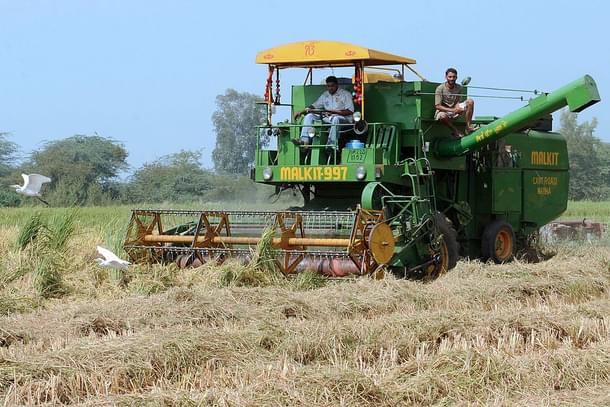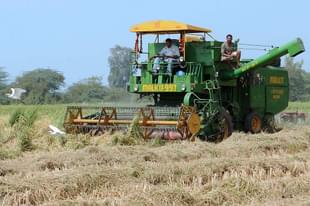News Brief
Economic Survey Bets Big On Farm Mechanisation To Double Farmers’ Income Amidst Shrinking Land, Water Resources
M R Subramani
Jan 31, 2020, 06:07 PM | Updated 06:07 PM IST
Save & read from anywhere!
Bookmark stories for easy access on any device or the Swarajya app.


The Economic Survey tabled in Parliament by Union Finance Minister Nirmala Sitharaman today (31 January) looks at various ways to carry forward the Centre’s ambitious programme of doubling the farmers’ income by 2022.
The Survey bets big on mechanisation of production and post-harvest operation so that farming could be commercialised from the current focus on subsistence. This is essential since the availability of resources such as land and water has been shrinking.
Going by the survey’s reliance on data, India has a good scope to mechanise farming since only 40 per cent of Indian agriculture has been mechanised compared with China’s 59.5 per cent and Brazil’s 75 per cent.
Pointing out at a NABARD study on farm mechanisation, the Survey says that focus on water efficiency has become imperative for sustainable farming.
To increase water use efficiency at farm the level, the Economic Survey calls for further promotion of drip and sprinkle irrigation through schemes such as Pradhan Mantri Krishi Sinchayee Yojana.
Stating that livestock income had become important secondary sources of income for rural families, the survey says it has an important role to play in doubling farm income.
The heartening feature of the livestock sector is its compounded annual growth of 7.9 per cent in the last five years.
The survey looks at fisheries as an important source of food, nutrition besides employment and income in the country. It points out that the sector provides livelihood to 16 million fishermen.
A seven per cent growth in the last few years is a notable achievement in the sector and the creation of the Department of Fisheries is expected to bring more focus to the sector.
The Survey looks at the food processing sector to achieve the Government’s objective of doubling the farmers’ income. A higher level of processing agricultural products can help in cutting wastage, improving value-addition, promote diversification of crop and ensure better return to farmers.
The sector can play a key role in providing employment and driving up exports.
According to the survey, the food processing sector constituted 8.83 per cent and 10.66 per cent of Gross Value Added (GVA) in the manufacturing and agriculture sector respectively during 2017-18 at 2011-12 prices.
The Economic Survey has stressed the need to increase financial inclusion in the North-East to rectify the highly-skewed distribution of credit in the region.
The Survey also brings to light the drop in agriculture GVA to 16.5 per cent from 18.2 per cent between 2014-15 and 2019-20 due to structural changes in the economy.
Another drawback is that it wants more allocation for food subsidy even as it calls for prudent management of foodgrain stocks with the Food Corporation of India.
M.R. Subramani is Executive Editor, Swarajya. He tweets @mrsubramani





